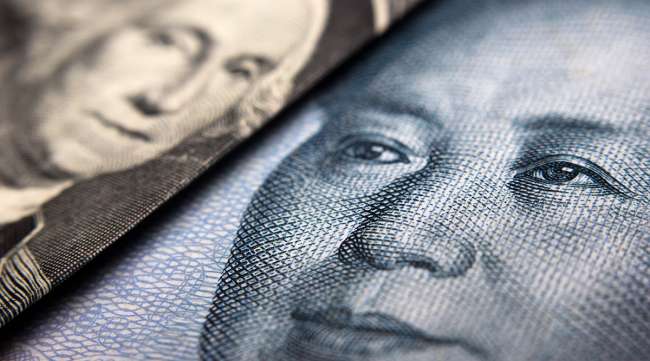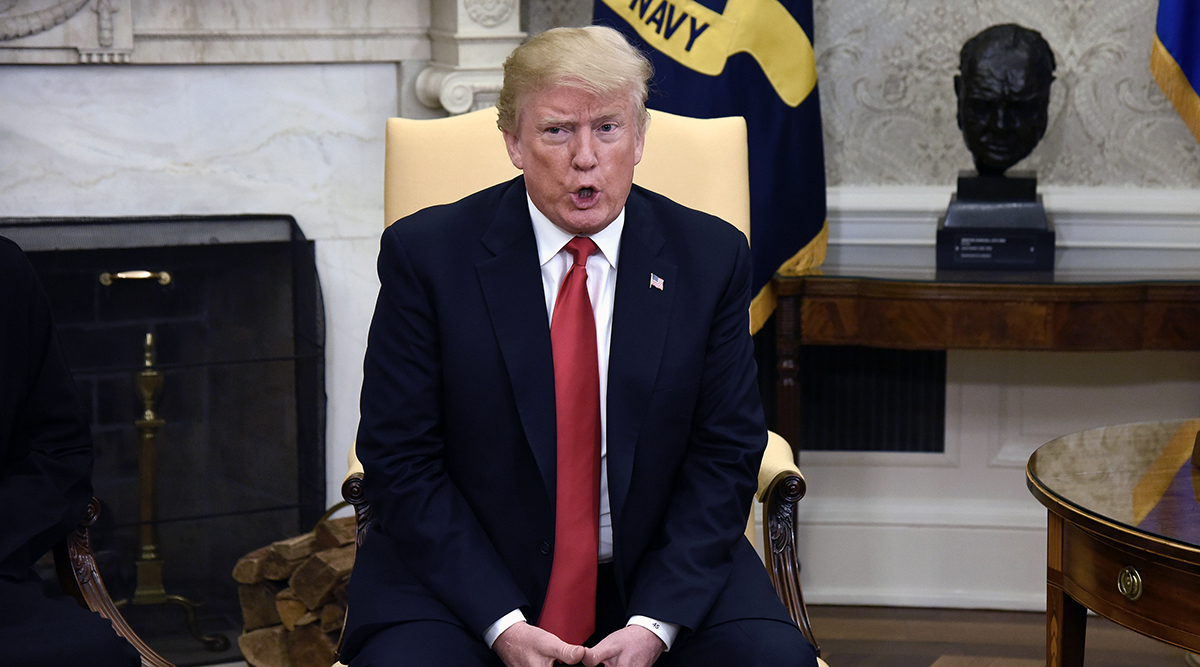US, China Barter on Trade Gap as Tariff Deadline Nears

The United States and China continued to haggle over the shape of a deal to fend off an impending trade war, with China offering to boost purchases of American goods and the United States finalizing a deal to allow China’s ZTE Corp. to resume purchases from American suppliers.
Ahead of a mid-June deadline for imposing tariffs on Chinese imports, China has offered to boost purchases of U.S. goods by about $25 billion this year, according to two people familiar with the matter, who spoke on condition of anonymity because the negotiations aren’t public. Crude oil, coal and farm products are among the goods that the Chinese are willing to buy more of, according to the people briefed on the talks.
RELATED: Trump - US-China trade deal may need ‘different structure’
The proposals are the latest in the negotiations between the world’s two largest economies, which have been trading threats for months. U.S. Commerce Secretary Wilbur Ross was in Beijing earlier this month for the third round of high-level negotiations, which focused on China agreeing to buying more U.S. energy and farming goods, according to the White House.
China’s Ministry of Commerce didn’t give a response when asked June 6 about the reports on trade and ZTE.

Olivier Douliery/Abaca Press/TNS
The administration of President Donald Trump has made reducing the deficit in the goods trade with China and other nations one of its most important policy goals. While it has imposed tariffs on steel and aluminum imports from across the world, it has yet to enact any of the China-specific levies it has threatened, and China has warned it would cancel any promises over trade with the United States if that happened.
U.S. goods exported to China last year totaled $130 billion, while Chinese imports to the United States totaled $506 billion. That left a U.S. deficit of more than $375 billion.
RELATED: US trade gap narrows to seven-month low on record exports
RELATED: Trump’s China tariffs will pinch US consumers, retailers warn
While the Chinese offer to buy another $25 billion a year of U.S. energy and agricultural products would almost double those shipments compared with 2017, it is a far cry from the $200 billion rise that the Trump administration initially demanded.
“China can certainly implement a $25 billion commitment since all its state-owned enterprises will obey the order of the Communist Party,” said Tao Jingzhou, a managing partner at Dechert in Beijing. “But I am afraid that the Trump team may consider that a way too low figure compared with what the U.S. demanded. In addition, it looks quite unlikely that the U.S. will refrain from the tariffs threat.”
For the ZTE deal, U.S. and Chinese officials still are finalizing the details, and it could still fall apart, according to one source, who spoke on condition of anonymity to discuss internal deliberations. Reuters earlier on June 5 reported that ZTE has signed an agreement in principle that would allow the crippled company to resume operations.
A U.S. Commerce Department spokesman said no definitive pact has been signed by the two parties, but reports June 5 that a deal was close sparked a renewed outcry from U.S. lawmakers, with senators from both major parties opposing easing restrictions on the company.
Shares in major smartphone component suppliers AAC Technologies Holdings Inc. and Sunny Optical Technology Group Co. surged more than 6% in Hong Kong, as the prospect of an imminent deal assuaged concerns the ZTE ban could widen and begin to hurt the mobile supply chains.
“People were worried that the U.S. may expand curbs to Huawei, a big customer of Sunny. Also, there were worries that the U.S. may curb smartphone component imports,”’ said Elsie Sheng, an analyst with Orient Finance Holdings.
Meanwhile the U.S. government also is looking at limiting Chinese investment and will report by the end of this month how it plans to tighten scrutiny of that. Treasury Secretary Steven Mnuchin is said to want to rely on legislation to tighten controls, instead of an executive move imposing sweeping new limits, according to three people familiar with the matter.
$70 Billion?
Chinese officials have indicated the nation is open to buying as much as $70 billion in U.S. exports, according to the people with knowledge of the talks. But much of that represents products the Asian nation already has promised to buy, and in some cases the Chinese haven’t been willing to back their pledges with written contracts, they said. The $70 billion offer was first reported by The Wall Street Journal.
President Xi Jinping’s government is open to entering into legal contracts to obtain about an additional $25 billion in goods from the United States this year, according to the people.
The Chinese offer comes as the world’s two biggest economies try to stave off a trade war that could undermine global growth. Trump has threatened to slap tariffs on at least $50 billion in Chinese imports shortly after publishing a final list of targets June 15. China has vowed to retaliate on everything from U.S. soybeans to airplanes and said it will abandon its commitments if the United States follows through on its tariff threat.
“The Chinese offer is certainly not enough and far from the touted half-way compromise, but any movement is welcome,” said Dariusz Kowalczyk, senior emerging-market strategist at Credit Agricole SA in Hong Kong. “That said, there are only nine days left till the U.S. announces the list of products subject to tariffs on $50 billion in Chinese exports. Overall, we remain of the view that a deal avoiding any new tariffs has a slightly more than a 50% chance.”
With assistance from James Mayger, Miao Han and Jeanny Yu.




